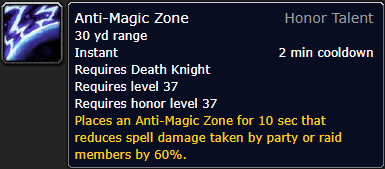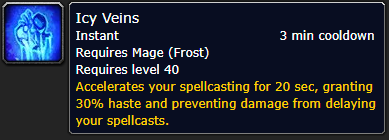This is the third article our Opening Moves series, where we talk to World of Warcraft esports pros about the metagame and strategy behind the beginning of every match. Read part two here.
Once the gates have opened and the target’s been called, the fighting begins! Swords clash, spells fly, the competing teams test each others’ mettle, as well as their own. But this initial skirmish isn’t just about trading blows—it’s about trading cooldowns.
Each player has a variety of defensive and offensive ability cooldowns, determined by their class, specialization, and talent choices. Offensive cooldowns can increase a player’s burst-damage output, while defensive cooldowns save lives by greatly reducing damage taken, allowing players to stay in the fight. These cooldowns are only available every one to two minutes, however, so timing is key.
It’s important to think about cooldowns collectively: what’s available to your team, and what’s available to your opponents? As your team gains more experience, you’ll begin to realize what you’re capable of in terms of dealing and taking damage, and how to best rotate your cooldowns.
Why Cooldown Management Matters
To learn why cooldown management is so important, we asked Jason “Pika” Smith, one of the most infamous Rogue players in the World of Warcraft Arena scene, to describe his worst-case scenarios for a match opening.
“If you try to all-in someone by popping all your offensive cooldowns, and you don’t even draw out a defensive cooldown, the other team will have the upper hand,” said Jason “Pika” Smith. “Inversely, if another team opens up on you and forces all your team’s defensive cooldowns, you’re pretty much guaranteed to die.”
In both of these scenarios, the “cooldown equation” between the competing teams becomes quickly imbalanced. “A common mistake that teams make is panicking and overlapping cooldowns unnecessarily, which puts them behind for the rest of the match”, Pika added. Be sure to communicate with your team to avoid using two cooldowns where one would have sufficed!
One of your most useful tools in making the right decision in these cases is game knowledge. The better you understand your opponents’ cooldowns, the more efficiently your team can theirs. “Many cooldowns and abilities have very schematic responses,” Alex “Alec” Sheldrick observed. “For example, if a Mage casts Icy Veins, a Death Knight should trade their Anti-Magic Zone to protect their team because those two abilities have similar cooldown lengths.”


Keep Them Guessing
However, not every decision you make should be automatic, Alec says. “I try to make my opponents less comfortable by playing in ways they might not expect. For example, many Mages use Invisibility for a stronger opening; however, I use it as a defensive ability so that my team can play to win by attrition—not by brute force.”
“Most people use their abilities in the same way, but I encourage you to ‘break the meta’ and experiment. Grow your own comfort zone, and focus on putting your enemies out of theirs.” – Alec
Though complex, cooldown management isn’t quite calculus, so keep practicing, keep experimenting, and stay tuned for the next entry into our Opening Moves series, where we’ll discuss reacting to the moment with professional World of Warcraft Arena players to help level up your play.

